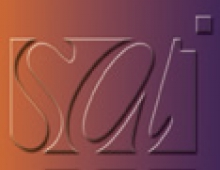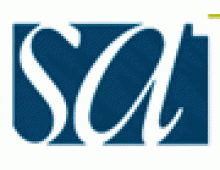
Software Architects announces v2.0 of UDF development toolkit
SAI, the world leader in UDF file system technology, announced the release of Version 2.0 of its UDF Development Toolkit for MS Windows. V2.0 is the first and only developer toolkit for creating on-line file system level and application level products that can read and write to all recordable DVD media in all UDF format versions. The toolkit also supports CD-R/W media
Everything Needed to Run a Read/Write UDF File System
The toolkit provides everything needed to format, read, write, update, and erase media using SAI’s OSTA compliant UDF file system. Developers of recordable DVD, CD-RW and MO based storage applications can save development time and ensure compatibility with key industry standards by using this toolkit
Support for All UDF versions, optical media types and writing methods
The toolkit supports all versions of UDF, including v1.0.2, 1.5, 2.0 and 2.0.1, and supports real time DVD video recording. Block addressable writing, packet writing and image mastering writing methods are also supported.
Device driver support has been expanded to include DVD-RAM/R, DVD-R/W, CD-R/W, DVD+R/W and MO drives. The toolkit is ideal for application developers creating video or audio editing, authoring and mastering products, as well as for set top boxes, medical imaging systems, optical jukeboxes, NAS devices and telephone recording systems.
Two Development Toolkit versions
The Toolkit comes in two versions: the Application Level version and the System Level version.
Developers that want complete control of all formatting and media functions from within their own application will prefer the Application Level Toolkit. With over 100 calls included in its API, the Application Toolkit provides developers the most control.
Developers who prefer to have an “on-line” file system integrated with MS Explorer will find the System Level Toolkit more appropriate. This toolkit provides a quick and easy method to provide UDF read/write capability into an application. Formatting functions are provided in a .DLL or they can be directly linked, for easy integration into an application. The toolkit contains 23 calls to the API, and the file system drivers use standard MS Windows system calls. Jukebox application developers will find the System Level Toolkit the version of choice.
Key Components:
The Application Level Toolkit consists of the UDF file system engine and API. The API includes 99 calls available from the application to the engine, and 10 calls from the engine to the device driver level. The toolkit is written in C, using Microsoft’s Visual Studio development environment.
The System Level Toolkit consists of a special UDF formatting library that can be integrated into a third party application, and an on-line, “drive letter access” UDF file system driver integrated with MS Explorer™. Device support is included for various types of media, including: MO, DVD-RAM, DVD-R/W, DVD+R/W and CD-R/W. Support for ATAPI, SCSI, FireWire and USB protocols are available.
Systems Supported:
Intel Pentium based PC running MS Windows™ NT service pack 6; Windows 2000 Professional or Windows XP Professional. 128 MBytes RAM required; 256 MBytes RAM recommended.
Compliant Key Industry Standards and Specifications
Both versions of the toolkit are compliant with the OSTA UDF Implementation Guideline. OSTA (Optical Storage Technology Association) publishes the UDF specification and implementation guidelines. UDF formats created by the toolkit in UDF v2.01 are also compliant with DVD Forum specifications for real time video file recording.
Compatibility with Operating Systems
Discs formatted into UDF with the toolkit are read compatible with MS Windows Me, 2000 and XP UDF readers and Apple Mac OS 8.6, 9 and X.
Pricing and Availability
Basic Development licenses start at $14,500. Extended support and distribution licenses are available on request. Product is available 15 July 2002.
The toolkit provides everything needed to format, read, write, update, and erase media using SAI’s OSTA compliant UDF file system. Developers of recordable DVD, CD-RW and MO based storage applications can save development time and ensure compatibility with key industry standards by using this toolkit
Support for All UDF versions, optical media types and writing methods
The toolkit supports all versions of UDF, including v1.0.2, 1.5, 2.0 and 2.0.1, and supports real time DVD video recording. Block addressable writing, packet writing and image mastering writing methods are also supported.
Device driver support has been expanded to include DVD-RAM/R, DVD-R/W, CD-R/W, DVD+R/W and MO drives. The toolkit is ideal for application developers creating video or audio editing, authoring and mastering products, as well as for set top boxes, medical imaging systems, optical jukeboxes, NAS devices and telephone recording systems.
Two Development Toolkit versions
The Toolkit comes in two versions: the Application Level version and the System Level version.
Developers that want complete control of all formatting and media functions from within their own application will prefer the Application Level Toolkit. With over 100 calls included in its API, the Application Toolkit provides developers the most control.
Developers who prefer to have an “on-line” file system integrated with MS Explorer will find the System Level Toolkit more appropriate. This toolkit provides a quick and easy method to provide UDF read/write capability into an application. Formatting functions are provided in a .DLL or they can be directly linked, for easy integration into an application. The toolkit contains 23 calls to the API, and the file system drivers use standard MS Windows system calls. Jukebox application developers will find the System Level Toolkit the version of choice.
Key Components:
The Application Level Toolkit consists of the UDF file system engine and API. The API includes 99 calls available from the application to the engine, and 10 calls from the engine to the device driver level. The toolkit is written in C, using Microsoft’s Visual Studio development environment.
The System Level Toolkit consists of a special UDF formatting library that can be integrated into a third party application, and an on-line, “drive letter access” UDF file system driver integrated with MS Explorer™. Device support is included for various types of media, including: MO, DVD-RAM, DVD-R/W, DVD+R/W and CD-R/W. Support for ATAPI, SCSI, FireWire and USB protocols are available.
Systems Supported:
Intel Pentium based PC running MS Windows™ NT service pack 6; Windows 2000 Professional or Windows XP Professional. 128 MBytes RAM required; 256 MBytes RAM recommended.
Compliant Key Industry Standards and Specifications
Both versions of the toolkit are compliant with the OSTA UDF Implementation Guideline. OSTA (Optical Storage Technology Association) publishes the UDF specification and implementation guidelines. UDF formats created by the toolkit in UDF v2.01 are also compliant with DVD Forum specifications for real time video file recording.
Compatibility with Operating Systems
Discs formatted into UDF with the toolkit are read compatible with MS Windows Me, 2000 and XP UDF readers and Apple Mac OS 8.6, 9 and X.
Pricing and Availability
Basic Development licenses start at $14,500. Extended support and distribution licenses are available on request. Product is available 15 July 2002.
















